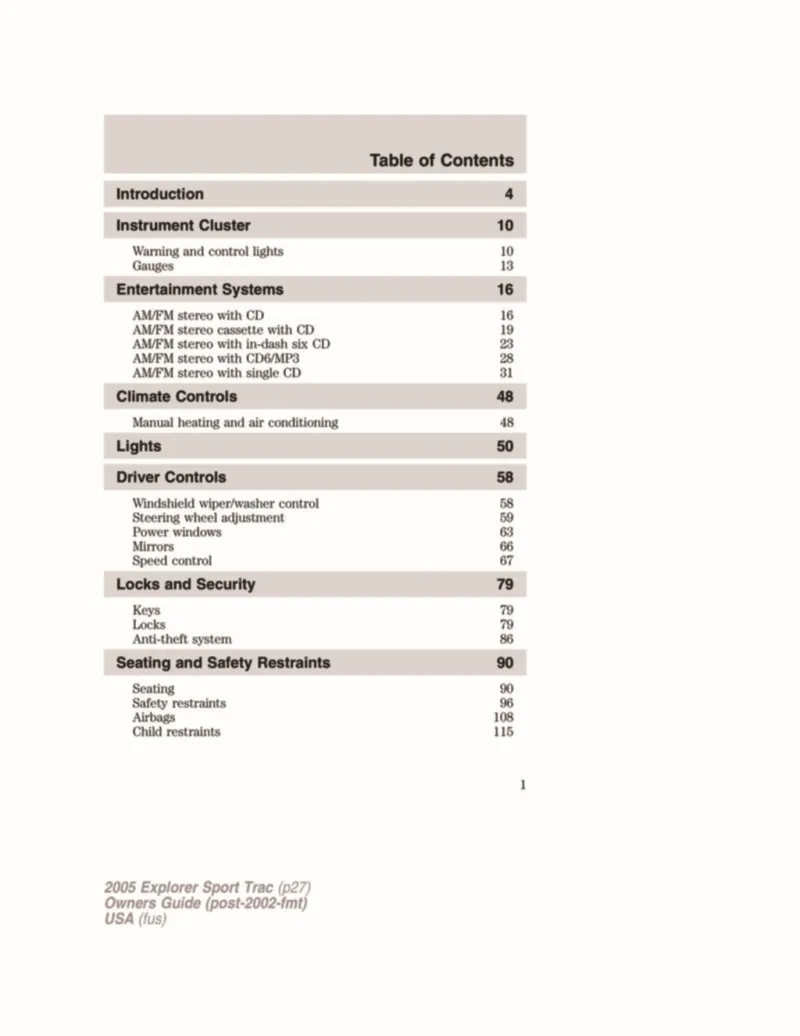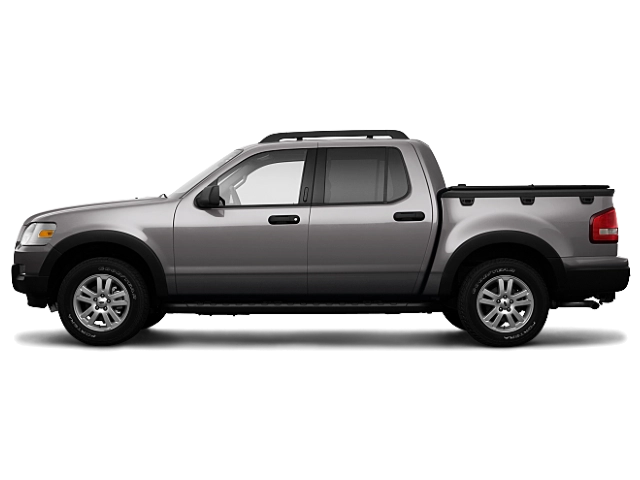2005 Ford Explorer Sport Trac Owner's Manual

Table of Contents
2005 Ford Explorer Sport Trac Overview
Introduction
The 2005 Ford Explorer Sport Trac melds the rugged utility of a truck with the comfort and functionality of an SUV, making it a versatile choice for both work and play. This mid-sized vehicle is designed for those who crave the practicality of a pickup while enjoying the spacious interior typically found in an SUV. With a sleek design and sturdy build, the Sport Trac is perfect for weekend adventures or daily commutes through the city.
Powertrains
The 2005 Explorer Sport Trac is powered by a robust 4.0-liter V6 engine that delivers a satisfying 210 horsepower and 254 lb-ft of torque. This engine is paired with a five-speed automatic transmission, offering smooth gear transitions and commendable acceleration. For those seeking enhanced traction and handling, the Sport Trac also comes equipped with an available four-wheel drive option, making it adept for various terrains and weather conditions.
Trims
Features
Inside the Sport Trac, convenience reigns supreme with ample storage compartments, optional power-adjustable front seats, and a multifunction display that integrates seamlessly with audio and climate controls. Available features include a six-disc CD changer, power windows, and remote keyless entry, ensuring a comfortable ride every time you hit the road.
Owner's Manual
The Owner's Manual for the 2005 Ford Explorer Sport Trac provides vital information on maintenance, safety features, and operational guidelines. This essential resource covers everything from fluid specifications to troubleshooting tips, ensuring owners can maximize their experience while maintaining their vehicle's longevity and performance.
User manual download
The Ford Explorer Sport Trac owner manual for the 2005 model year is to be found in PDF downloadable format on this page. The owner manual for the model year 2005 is free and in English, but the repair manuals are usually not easy to get and may cost more.
Manual Questions
Fill the form below and someone will help you!

